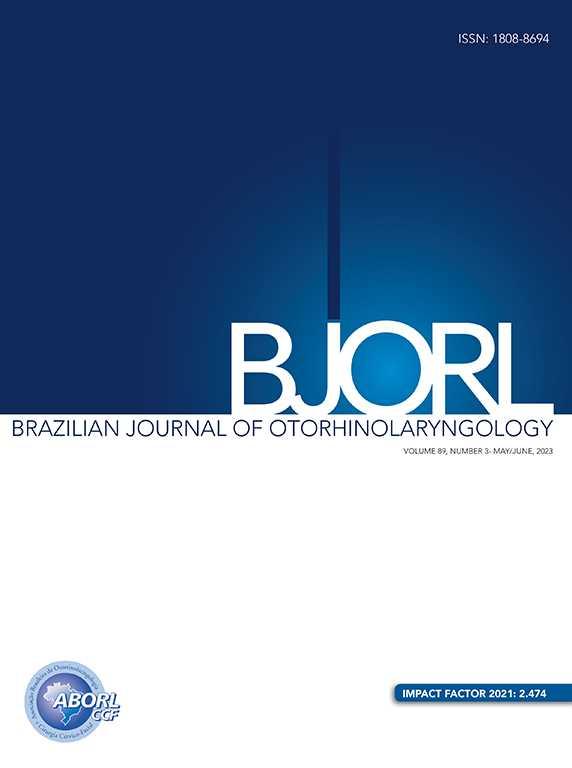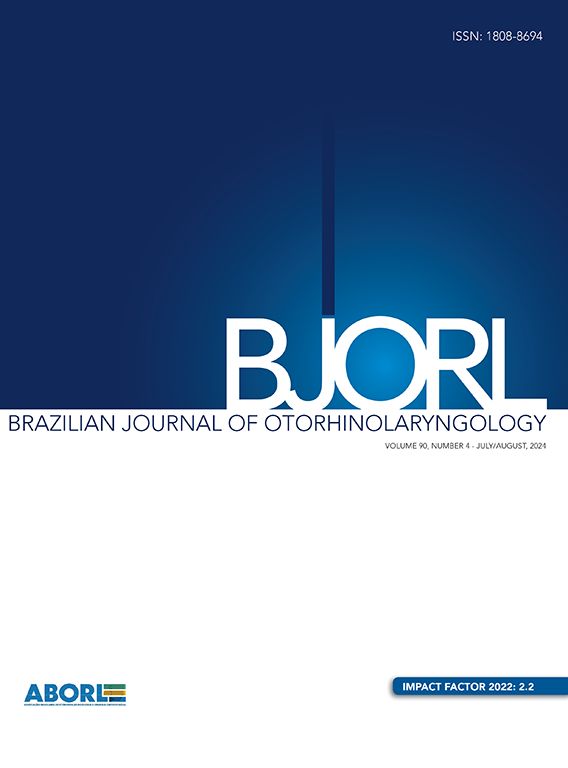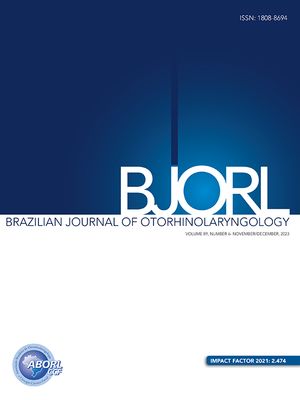The Brazilian Journal of Otorhinolaryngology aims to provide timely information for physicians and scientists focused on otorhinolaryngology and head and neck disorders, including contemporary, ethical, clinically relevant information in:
- General otolaryngology;
- Head and neck surgery;
- Respiratory sleep disorders;
- Allergy/rhinology;
- Otology/neurotology;
- Laryngology/broncho-esophagology;
- Pediatric otolaryngology;
- Cranio-facial surgery;
- Skull base surgery;
- Head and neck oncology;
- Phoniatrics;
- Upper airway related diseases;
- Facial plastics and reconstructive surgery.
The journal is the official peer-reviewed open access scientific publication of the Brazilian Association of Otorhinolaryngology and Cervicofacial Surgery (ABORL-CCF).
All articles will be published under the CC-BY license (Creative Commons Attribution 4.0 International) with copyright owned by the ABORL-CCF.
Please note that articles submitted as of May 1, 2022, which are accepted for publication will be subject to a fee (Article Publishing Charge, APC) payment by the author or research funder to cover the costs associated with publication.
Indexed in:
MEDLINE/PubMed, Scopus, Web of Science/SCIE, DOAJ, Lilacs, SciELO, Qualis A3
See moreFollow us:
The Impact Factor measures the average number of citations received in a particular year by papers published in the journal during the two preceding years.
© Clarivate Analytics, Journal Citation Reports 2022
SRJ is a prestige metric based on the idea that not all citations are the same. SJR uses a similar algorithm as the Google page rank; it provides a quantitative and qualitative measure of the journal's impact.
See moreSNIP measures contextual citation impact by wighting citations based on the total number of citations in a subject field.
See moreArticles in press are accepted, peer reviewed articles that are not yet assigned to volumes/issues, but are citable using DOI. More info
- •
From a genetic point of view.
- •
To provide new ideas for Meniere's treatment.
- •
A variety of MR analysis methods are used.
- •
A variety of sensitivity analysis methods are used.
- •
ERAS-based cluster nursing interventions can effectively improve dry mouth.
- •
ERAS-based cluster nursing interventions are able to increase comfort.
- •
ERAS-based cluster nursing interventions can effectively reduce negative emotions.
- •
NKX2-1 gene is an emerging target for H19 lncRNA.
- •
Binding site of H19 with NKX2-1 overlaps with has-miR-1827.
- •
Increased expression of NKX2-1 observed in benign nodular goiter.
- •
PNN resection & hormone transnasal nebulization shows good efficacy on DTRS.
- •
Combination can relieve the symptoms of DTRS patients, reduce adverse reactions.
- •
The combination deserves a promotion in clinical practice.
- •
Hearing loss children with multiple disabilities benefits from cochlear implantation.
- •
Communications improved with increasing duration of device usage.
- •
Cochlear implant is beneficial in reducing family’s stress level.
- Call for papers
- Instructions for authors
- Submit an article
- Ethics in publishing
- Open Access
- Language Editing services
 Submission deadline 27 de September de 2024
Submission deadline 27 de September de 2024














